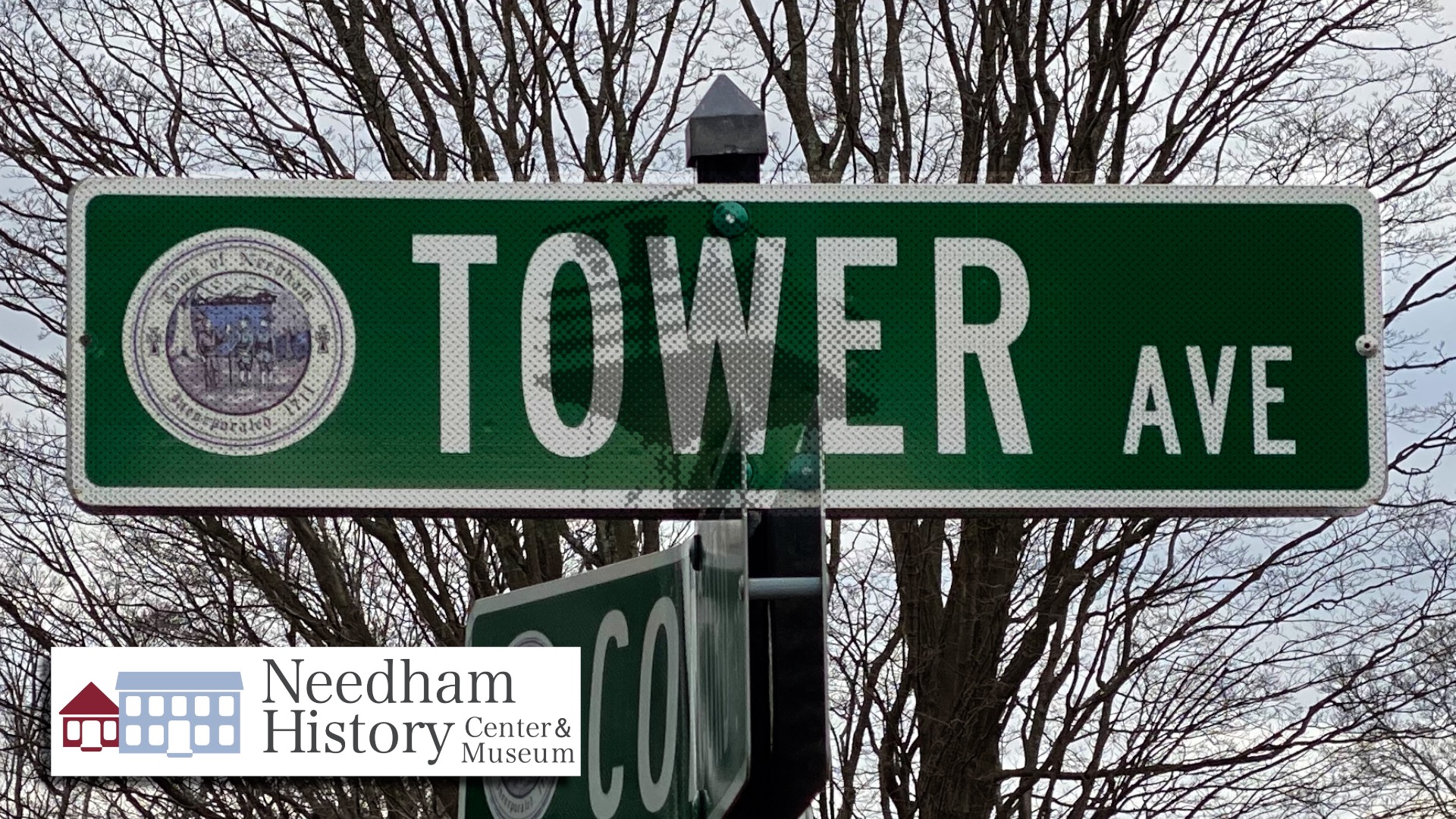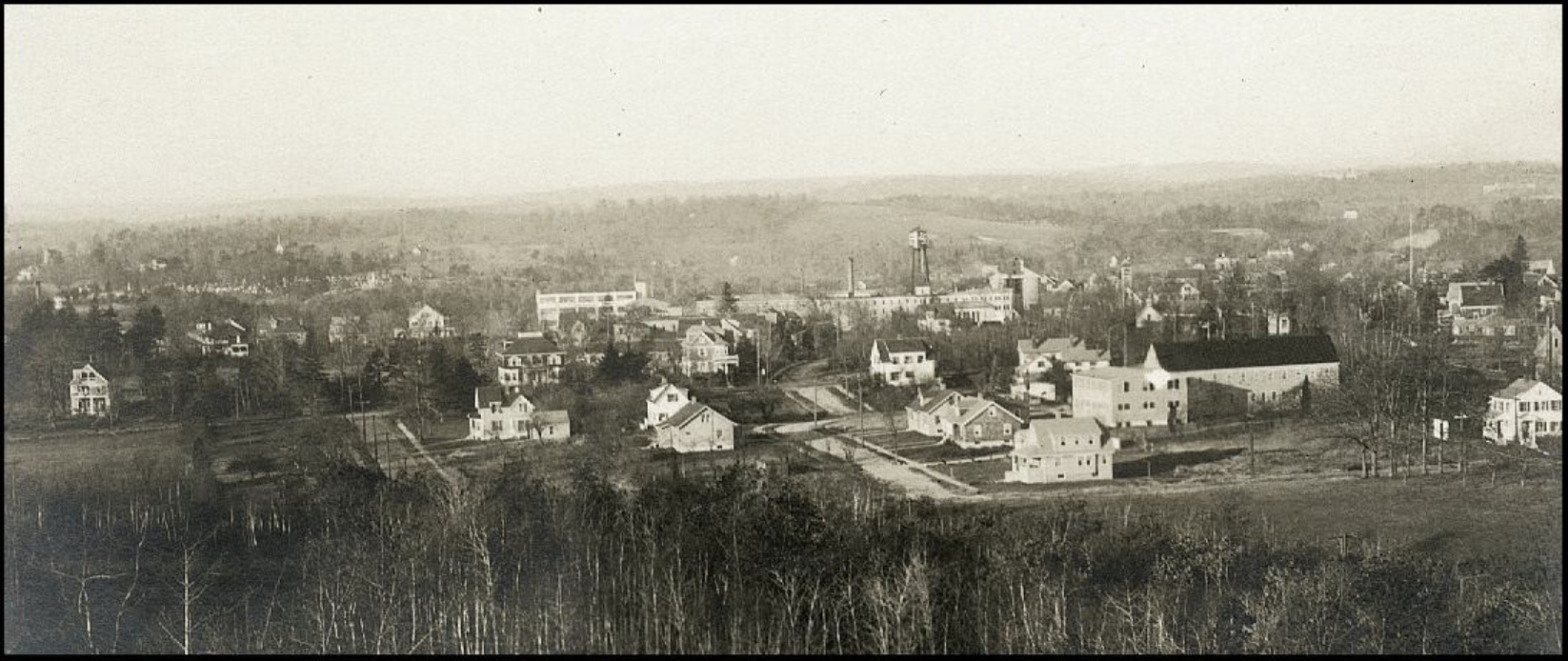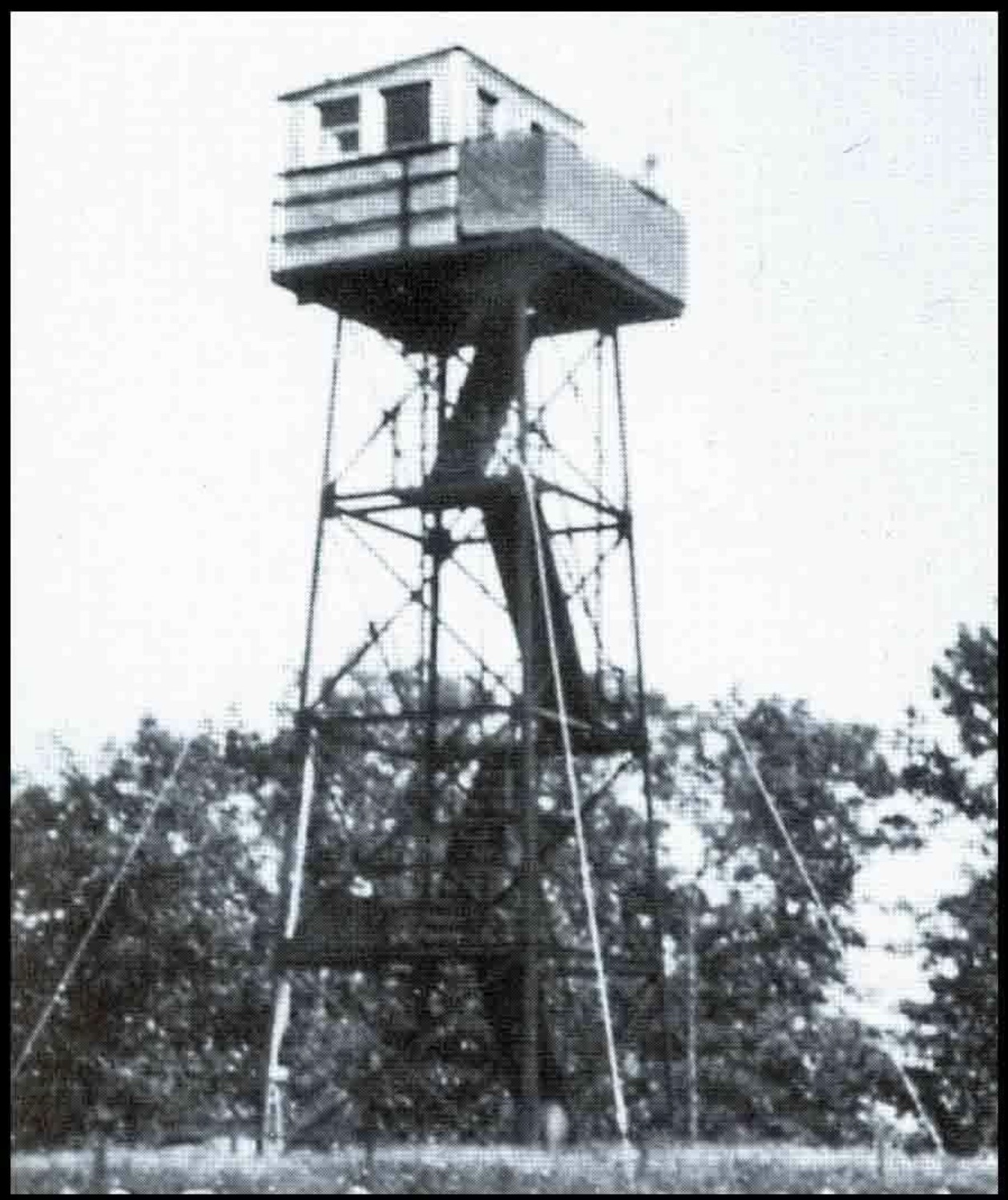
Needham History: The Other Tower on Tower Hill
Another high point in Needham!

A view of Needham Heights from the tower, late 1920s. The little street in the middle is Thorpe Road, and the nearest house is 3 Thorpe Road (built 1926), and still standing at the corner of Thorpe and Manning Street. Just behind and to its right is the long roof of the Joseph Thorpe Knitting Mill (Now the Gorse Mill Studios). The long expanse of the William Carter Company with its water tower is in the center of the picture. At the left edge is the lovely double-arch house at 491 Webster (built c.1850, also still standing).
The Other Tower on Tower Hill
I had always assumed that Tower Avenue and Tower Hill were so-called because of the water tower. The water tower has been up there, in one form or another, since around 1900 when the hill was known as Ryan’s Hill (because it was owned by a guy named Ryan). But there was also another well-known tower on Tower Hill, which is the subject of today’s story.
In 1924, William Henry Carter built an observation tower on Ryan’s Hill, just across Greendale Avenue from his residence. William Henry was the son of William Carter, founder of the William Carter Company. He was an avid sportsman, and the second president of the Carter Company; he had also been Needham’s representative in the MA General Court, and the district’s Representative in Congress. The tower was an open wooden platform and iron railing, built over an iron frame set on a concrete platform base. It rose to 35 feet high, and was reached by four flights of iron stairs.
The view was extensive and magnificent – the best view from the highest accessible vantage point in Needham:
“…including the Custom House Tower [Boston], Boston College, Mt. Monadnock, and other landmarks…. From the top of the tower, Needham, at this season [summer], is seen as the inside of a big green bowl, in the bottom of which glistens the gilded tower of the town hall, the graceful white steeple of the Baptist church, and the sturdy white belfry of the First Parish. In the Heights, the mills established by the father of the ex-Congressman [William Carter] make a pretty picture… All about – the rim of the bowl – are the hills, Blue Hill range, High Rock and others, with their varying shades of green.” (Needham Chronicle, 12 July 1924).
Carter intended the tower for recreation, and opened it for the public to enjoy the lovely view. He embellished the site around its base with flowers to make it attractive. And for the most part, this was how it was used. There was the incident when an enterprising young man sneaked up the tower one night and carved his initials in the platform; but the next morning, overcome with remorse, he ‘fessed up to his mother and she made him go back and repair it.
Then came the War. In January 1941, Needham’s American Legion Post #14, working with the US Army, established Carter’s tower as part of a regional network of air raid observation posts. At the time, this was just precautionary; the tower was manned only during maneuvers and training. However, after the surprise attack on Pearl Harbor, the US military was determined that the US should not be taken by surprise again and these observation towers were organized under the US Army’s Aircraft Warning Service. The schedule at the towers became continuous, with a constant rotation of 2-hour shifts. Daylight observers worked alone, and night-time observers worked in pairs to compensate for the diminished visibility. Observers were taught to recognize airplanes by type, and were to report on their speed, heading, and timing.
To accommodate the day-round, year-round use of the tower, a small hut was built on the platform to provide some shelter. It had windows all around, and covered about half the platform, leaving the other half open. For the next two and a half years, a Needham “home guard” volunteered to watch the skies, day and night. This included older men who had seen service in the First World War, students not yet old enough to enlist, and many women. They fit the hours into their daily routine, or lost some sleep before going about their labor.
Finally, by Spring 1944 the tide of the war was turning, and the widespread fears of air raids and sneak attacks was fading. To consolidate resources and save money, the Army decided to terminate the Aircraft Warning Service and transfer that duty to the military air fields:
“To All Volunteers of the Aircraft Warning Service: You have had a unique opportunity to see and take part in the gradual transition from the defensive position into which your country was forced at the start of the war to the offensive that is today forcing our enemies back towards Berlin and Tokio… All of you have contributed your share to make this transition from retreat to advance possible. The most crucial battles of our nation’s history are now in prospect overseas… The War Department sincerely hopes that you will not relax your war effort, and urges that you transfer to one of the many remaining vitally important jobs the loyalty and self-sacrifice you have shown in your work for the Aircraft Warning Service. The War Department is deeply grateful for the important service you have rendered your country.” (Letter from Henry L. Stimson, Secretary of War, 16 May 1944).
Once the War was over, the tower returned to its recreational purpose. Unfortunately, by then it had become less of a beauty spot and more of an attractive nuisance. After 24/7 use as an observation tower the novelty had worn off. Injury liability issues, less common in the 1920s, became a concern. Also, the shelter at the top became a convenient place for romantic trysts.
Around 1950, Carter offered to move the tower to the Boy Scout camp in the High Rock Woods, but they declined, citing their own liability fears. He then offered it to the Boy Scouts in Springfield, who gladly accepted, and the tower was dismantled and moved.
So the tower is gone, and with it the magnificent view. But even so, Needham in the summer is still “the inside of a big green bowl” and the gilded tower of the Town Hall still glistens.
The observation tower during the Second World War. The structure covering half of the platform was built to shelter the air raid watchers.

 |
Gloria Polizzotti Greis is the Executive Director of the Needham History Center & Museum. For more information, please see their website at www.needhamhistory.org. |

